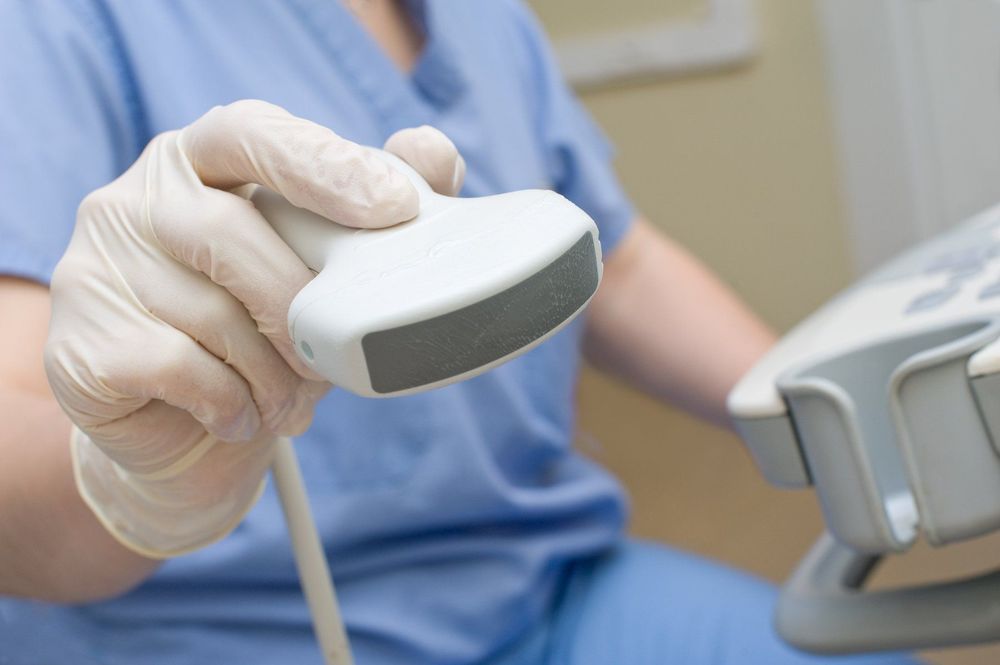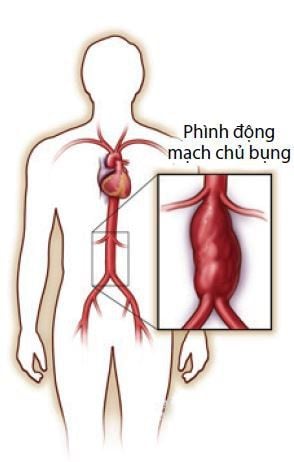This is an automatically translated article.
The article is professionally consulted by Master, Doctor Do Nguyen Thuy Doan Trang - Head of Extracorporeal Circulation Team - Cardiovascular Center - Vinmec Central Park International General Hospital. The doctor is a leading expert in Extracorporeal Circulation in cardiac surgery and cardiac resuscitation, Cardiovascular medical treatment.Ultrasound, abdominal imaging is a non-traumatic imaging method, low cost and can be performed many times. Ultrasound and imaging methods, which can be quickly implemented in all medical facilities, have the potential to contribute to increasing the accurate diagnosis rate in abdominal aortic aneurysms.
1. Abdominal Aortic Aneurysm Overview
1.1. What is an abdominal aortic aneurysm? An aneurysm is a focal dilation of the vessel wall that results in a loss of wall parallelism. Abdominal aortic aneurysm was defined as the largest diameter exceeding 1.5 times the diameter of the normal segment before it. The average diameter of the abdominal aorta in a normal person is 2cm, when the diameter of the abdominal aorta is greater than 3cm, it is considered an aneurysm.Subrenal abdominal aortic aneurysms account for 90-95% of abdominal aortic aneurysms, 40% of abdominal aortic aneurysms have associated iliac aneurysms.
1.2. Causes of Abdominal Aortic Aneurysm There are many causes of abdominal aortic aneurysm:
Smoking is the biggest risk factor for abdominal aortic aneurysm; Age, hypertension; Hypercholesterolemia and atherosclerosis (Atherosclerosis is thought to be a major cause of abdominal aortic aneurysm.. The subrenal aorta is the most affected by atherosclerosis and is the most common site of atherosclerosis. abdominal aortic aneurysm). Gender and genetic factors also influence the development of abdominal aortic aneurysms. The incidence of abdominal aortic aneurysms increases rapidly after age 55 in men and 70 years in women. 1.3. Signs of recognition Abdominal aortic aneurysm can be fatal if not detected and treated promptly. Therefore, you need to be aware of the signs and have regular exams to diagnose an abdominal aortic aneurysm.
Abdominal aortic aneurysms do not cause obvious symptoms, develop slowly over many years, and if aneurysms grow rapidly, tear (rupture), or bleed along the artery wall (dissection). aortic dissection), symptoms can come on suddenly.
Some signs of an abdominal aortic aneurysm may be:
Feel a pulse in your abdomen, similar to a heartbeat. Severe pain, sudden onset in the abdomen or pain in the lower back. Pain may radiate down the groin, buttocks, and legs. If this happens, your aneurysm may be about to burst. In rare cases, you may experience pain and cyanosis in your toes or feet as debris from the aneurysm blocks blood vessels. small spots in the feet and toes If your aneurysm bursts, you may suddenly feel tired, dizzy or in pain, or you may even lose consciousness. In addition, the patient will feel nausea and vomiting, sweating, heart palpitations in the standing position. This is a life-threatening situation and the person should go to the emergency room immediately.
2. The role of ultrasound, abdominal imaging in the diagnosis of abdominal aortic aneurysm

Ultrasound, abdominal imaging is a non-invasive, low-cost and possible method. performed many times in the diagnosis of abdominal aortic aneurysm. According to recent studies, abdominal ultrasound has 95% specificity in the diagnosis of abdominal aortic aneurysm. This rate is comparable to CT and MRI scans. Ultrasound can help diagnose and monitor abdominal aortic aneurysms.
Ultrasound provides information on:
Actual diameter and length of abdominal aortic aneurysm Aneurysm lumen diameter (when contrast is injected) Relation of aneurysm to major arteries originating from abdominal aorta. With such advantages, however, in many cases, ultrasound also has certain limitations such as:
Fat patients: ultrasound waves are difficult to penetrate deeply Abdomen is a lot bloated: It will interfere with the ultrasound field. ruptured abdominal aortic aneurysm.
3. Ultrasound, abdominal scans help evaluate abdominal aortic aneurysm
Most patients with an abdominal aortic aneurysm have no symptoms. Some clinical symptoms to diagnose abdominal aortic aneurysm include:Pain: can be sudden, severe or persistent pain in the middle of the abdomen or back, pain spreading down the legs Sweating, dizziness Shortness of breath Touching the abdomen to detect bulges. The ability to detect aneurysms on abdominal examination varies, depending on the experience of the examiner, the size of the aneurysm, and the thickness of the patient's abdominal wall. 40% of aneurysms can be palpated on abdominal examination Rapid pulse, low blood pressure. Diagnosis of abdominal aortic aneurysm by following imaging methods:
Abdominal ultrasound: Ultrasound can identify almost 100% of abdominal aortic aneurysm and location MSCT abdominal scan: MSCT scan to check Check the exact size of the aneurysm Angioplasty.
4. Prevention and control of abdominal aortic aneurysm

Some things you can do to reduce your risk include:
Don't smoke or drink alcohol. Blood pressure control: High blood pressure is an important cause of vascular disease, you should maintain normal blood pressure by using a reasonable diet, managing stress, stress or taking medication to control blood pressure. blood pressure control. Control your cholesterol levels: High cholesterol leads to atherosclerosis - which is one of the leading causes of aortic aneurysms. Regular physicals: When you maintain regular physical exams, problems that can increase your risk of aortic aneurysms, such as high blood pressure and high cholesterol, can be detected and treated early. If you have signs of abdominal aortic aneurysm, you should go to specialized medical facilities to be examined and consult a doctor for advice on the best support and treatment methods.
Vinmec International General Hospital is the leading medical address for diagnosis and treatment of aortic aneurysms. It has all the necessary medical equipment to perform simple to complex treatments such as medical treatment, stent-graft intervention, surgery... highly qualified, trained and certified technical, can handle quickly and effectively, especially in cases of urgent emergency. Therefore, patients with thoracic aortic aneurysms can rest assured with a strict, methodical and effective treatment process at Vinmec.
Please dial HOTLINE for more information or register for an appointment HERE. Download MyVinmec app to make appointments faster and to manage your bookings easily.














